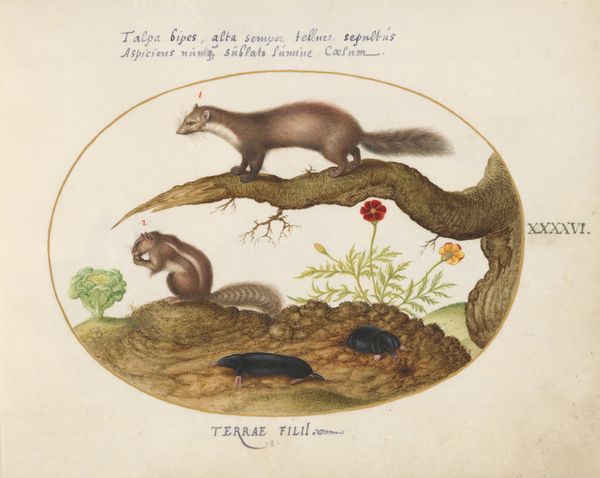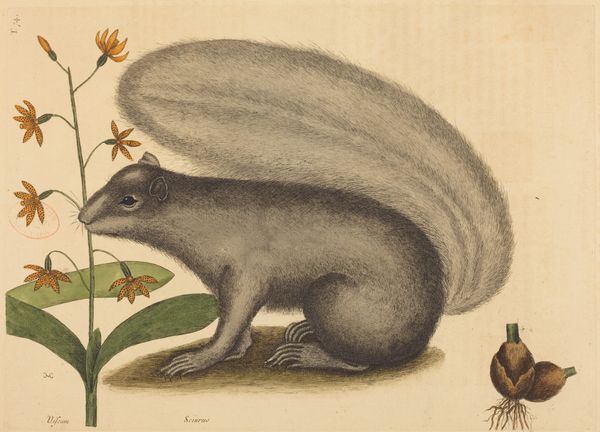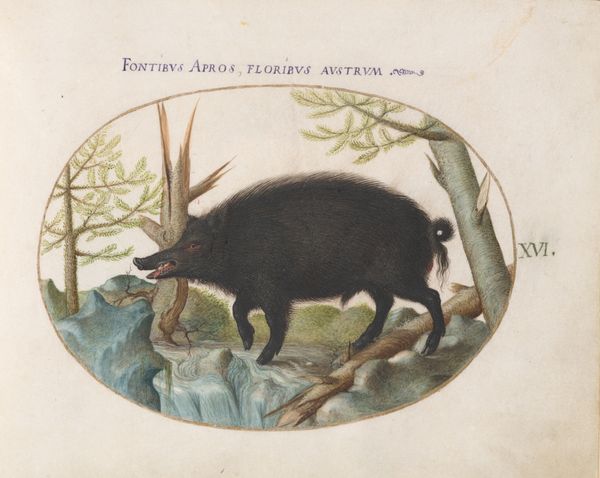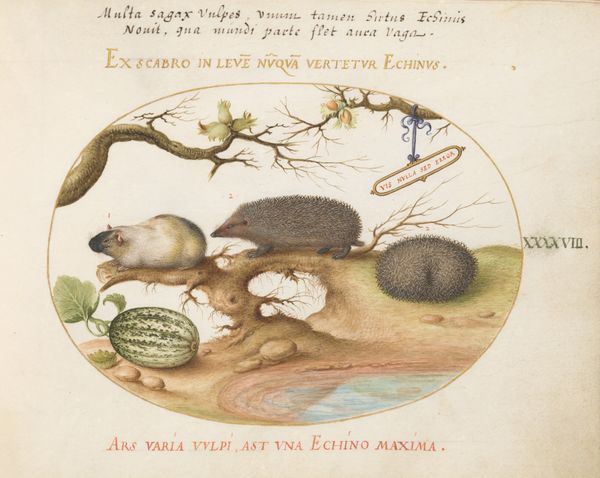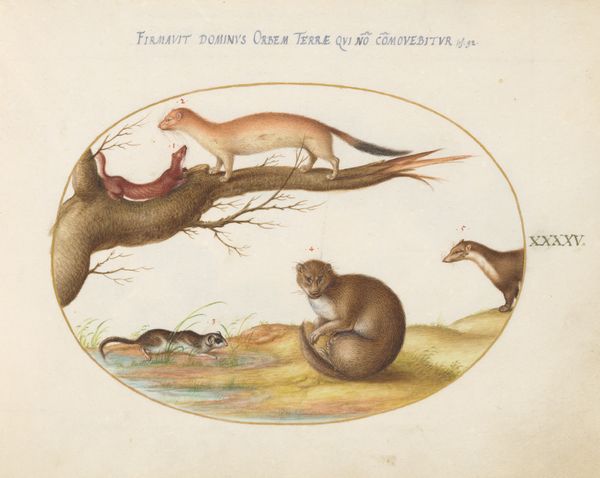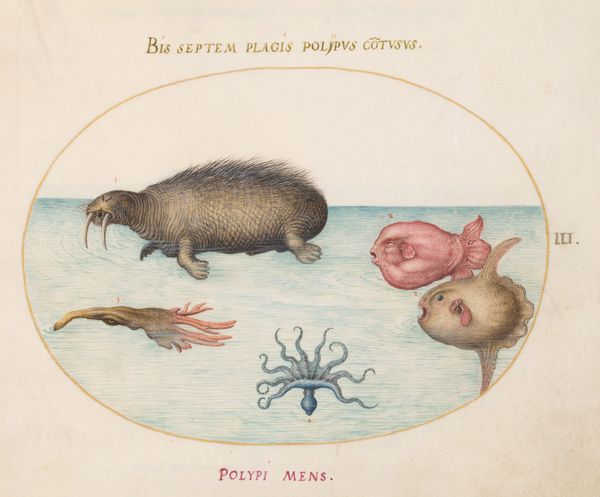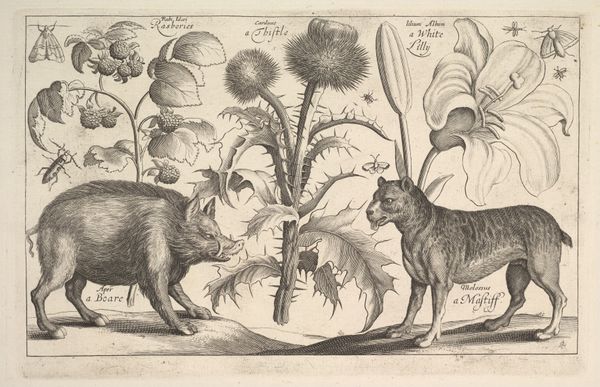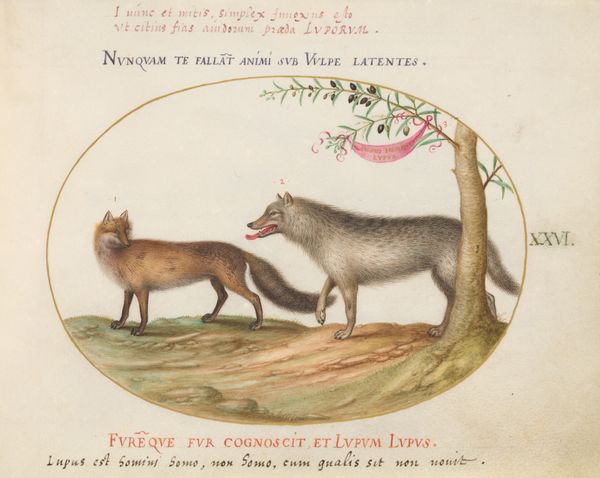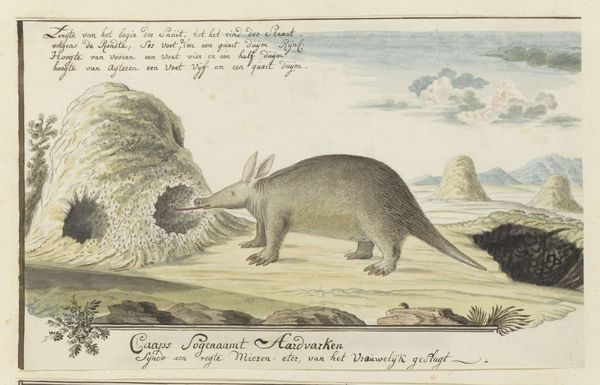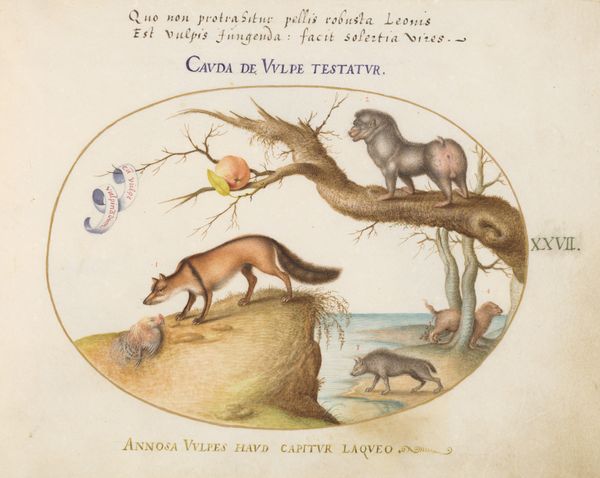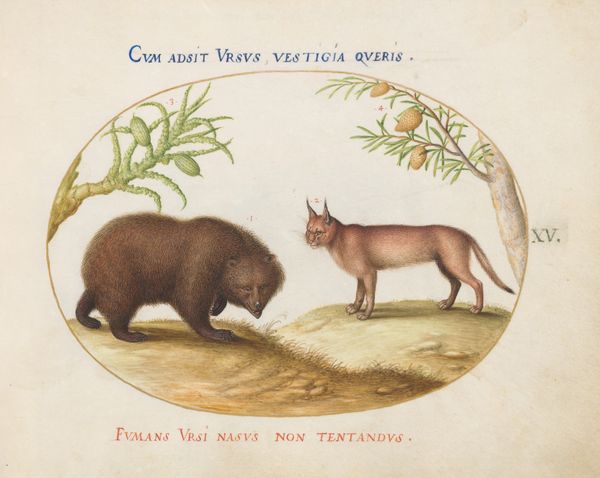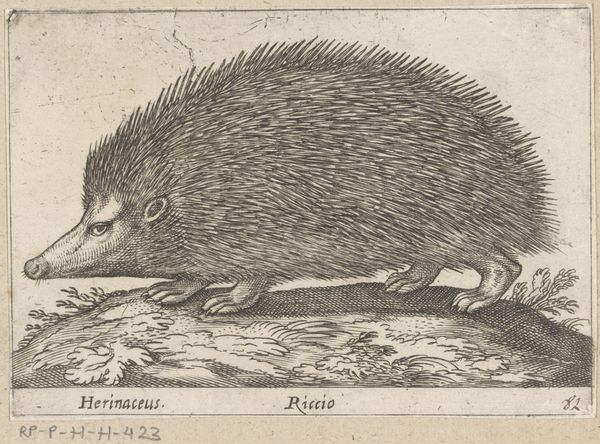
Plate 17: Old World Porcupine (Hystrix) and Wild Pig c. 1575 - 1580
0:00
0:00
drawing, coloured-pencil, watercolor
#
drawing
#
coloured-pencil
#
water colours
#
mannerism
#
watercolor
#
coloured pencil
Dimensions: page size (approximate): 14.3 x 18.4 cm (5 5/8 x 7 1/4 in.)
Copyright: National Gallery of Art: CC0 1.0
Editor: So, here we have "Plate 17: Old World Porcupine (Hystrix) and Wild Pig" made around 1575-1580 by Joris Hoefnagel, using watercolor and coloured pencil. It’s striking how detailed and precise the animals are. What stands out to you about this piece? Curator: It's the artist's sheer labor invested in this detailed rendering of flora and fauna that grabs my attention. Consider the process: grinding pigments, meticulous application of watercolor, precise strokes with coloured pencil. It begs the question, for whom was this level of craftsmanship intended and what was the means to allow that production to take place? Editor: I hadn’t considered the social context and who could afford such detailed work. Was this purely for the wealthy elite? Curator: Very likely. Luxury books were commodities. These images weren’t just about scientific documentation. Hoefnagel transformed these creatures, highlighting textures, through artistic skill. Does the rendering elevate them or somehow capture and dominate them through the art of drawing? Editor: That’s an interesting thought! I guess the pig and porcupine become possessions through the act of representation, displayed in a book. Are the materials – the pigments and paper – important in telling this story? Curator: Absolutely! Consider the origin of these materials. The sourcing of pigments was a global affair, representing trade networks and colonial expansion, especially cochineal, brazilwood or indigo used in these images. This impacts how we understand these objects beyond their aesthetic appeal. Editor: Thinking about the materials and labour definitely shifts my perception of this image. It’s no longer just a drawing of animals, it is now tied to historical systems. Curator: Exactly! It invites us to consider who benefited from this level of craftsmanship, and at what cost. Editor: I see. It shows art to be bound to labor and the economy in many interesting ways.
Comments
No comments
Be the first to comment and join the conversation on the ultimate creative platform.
